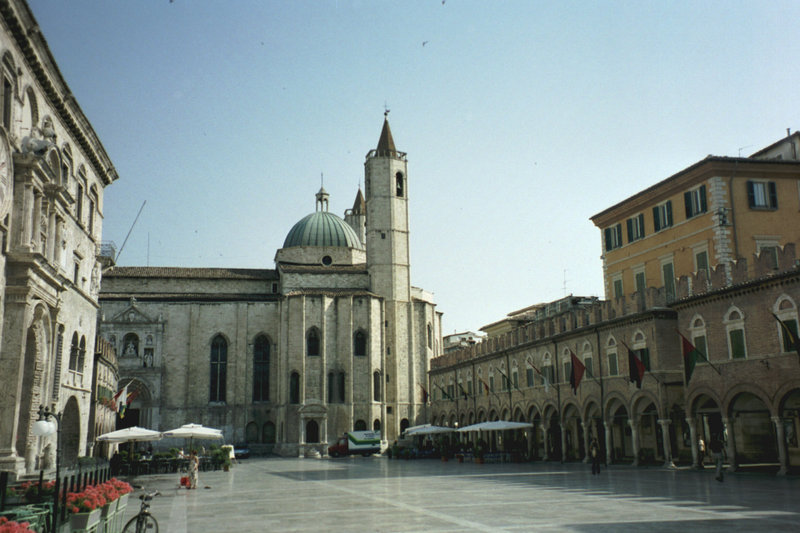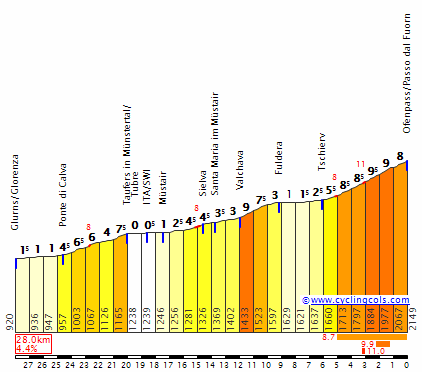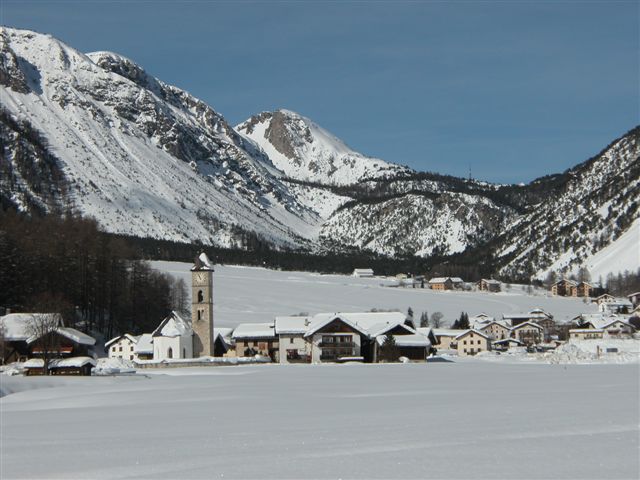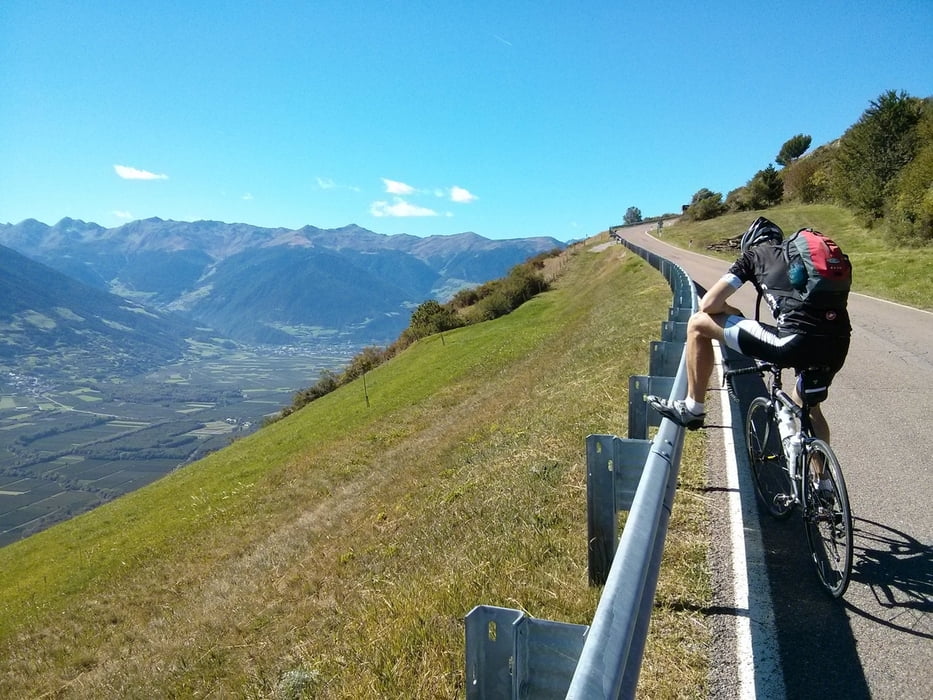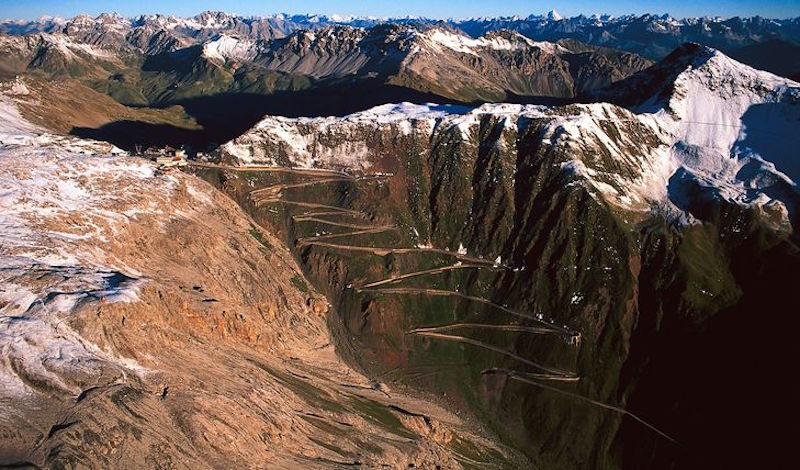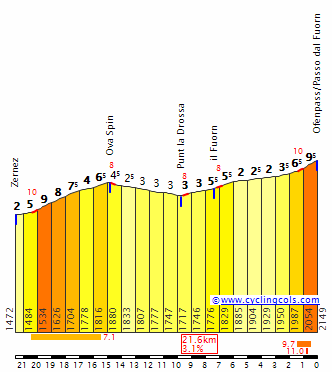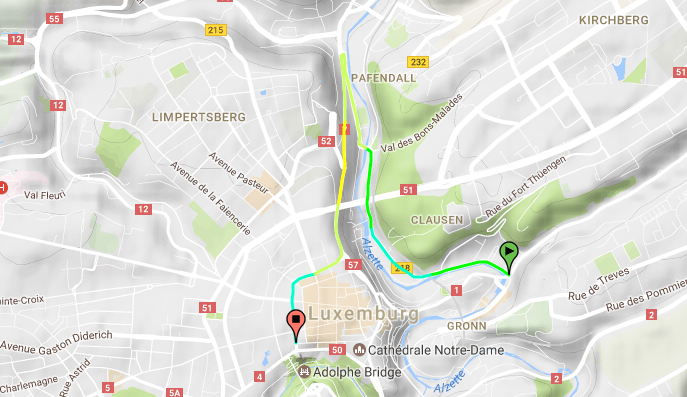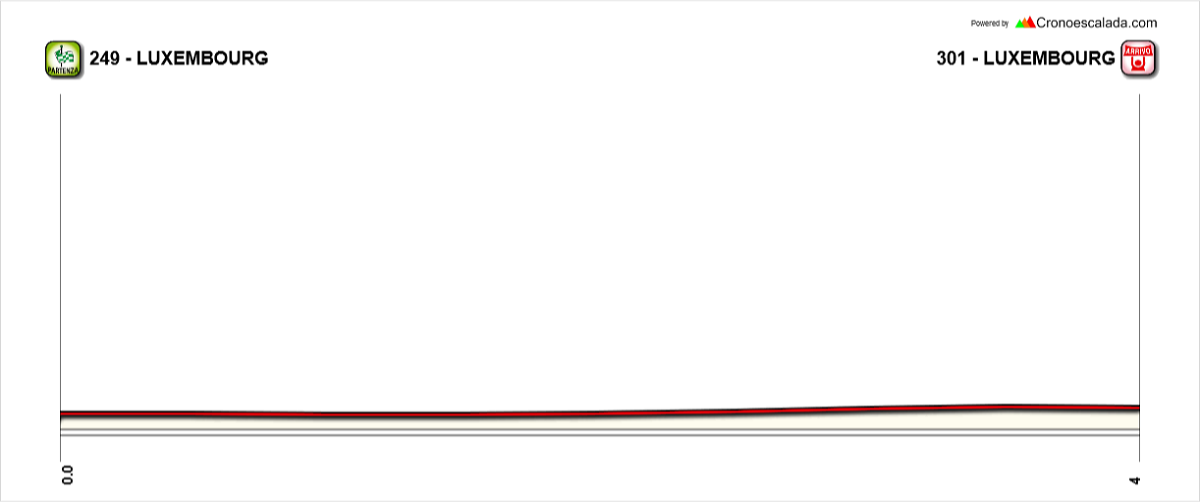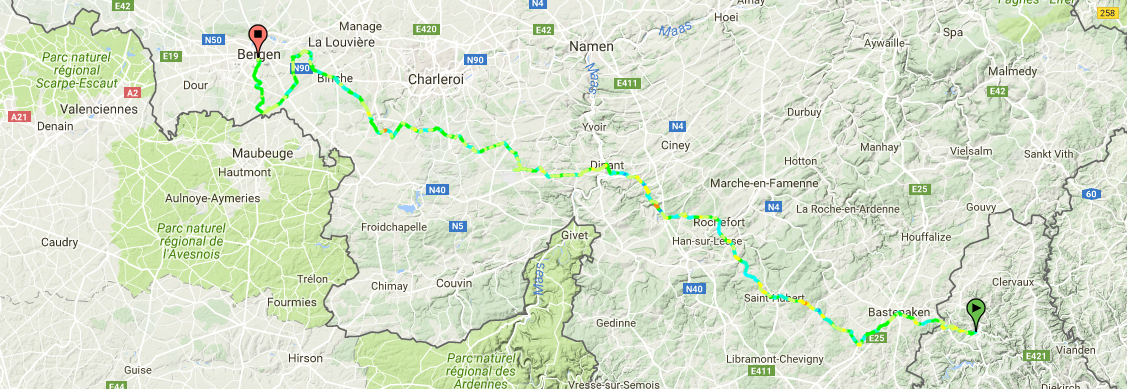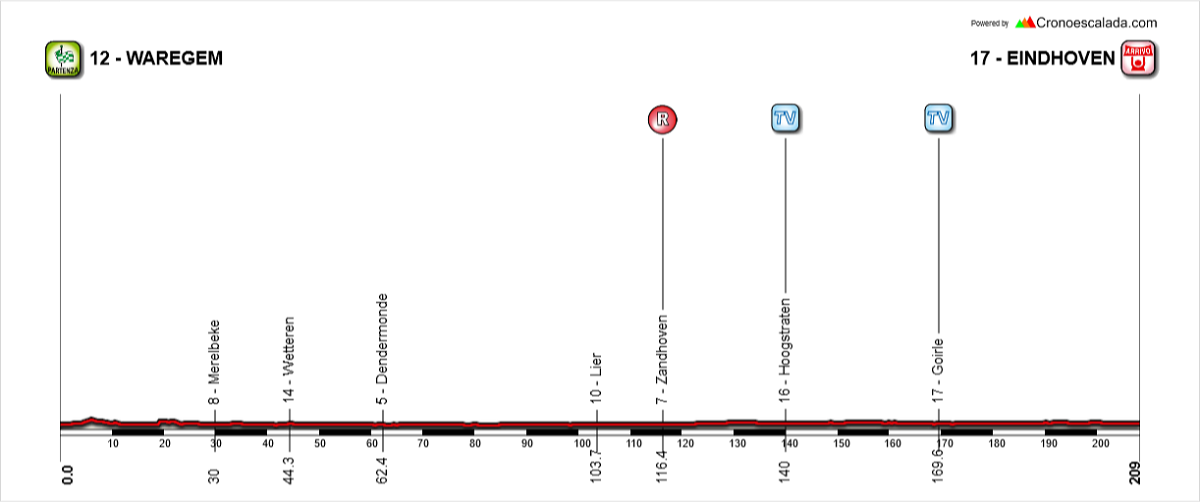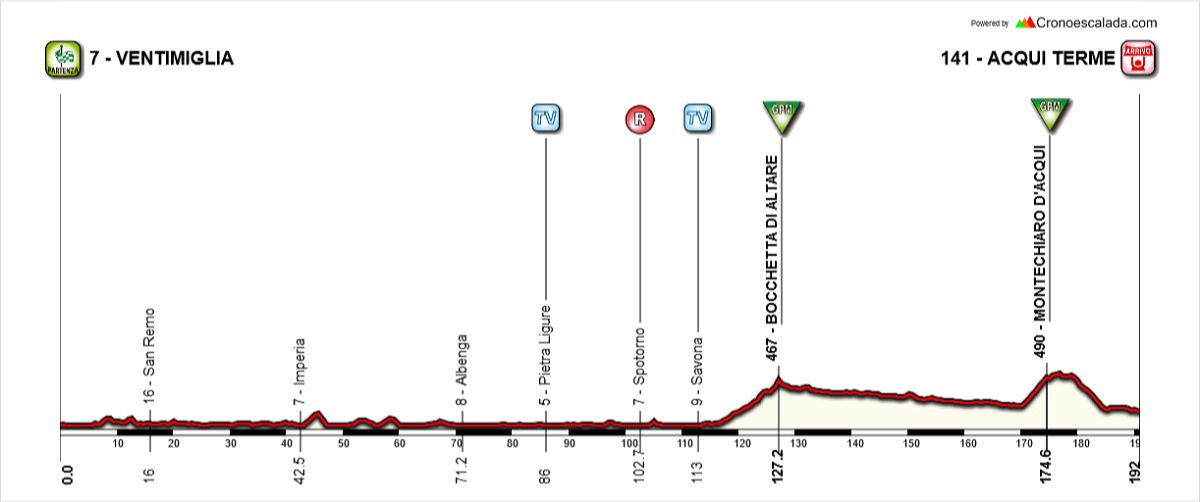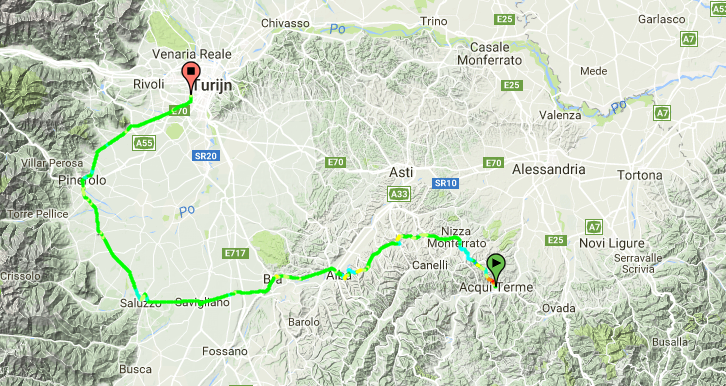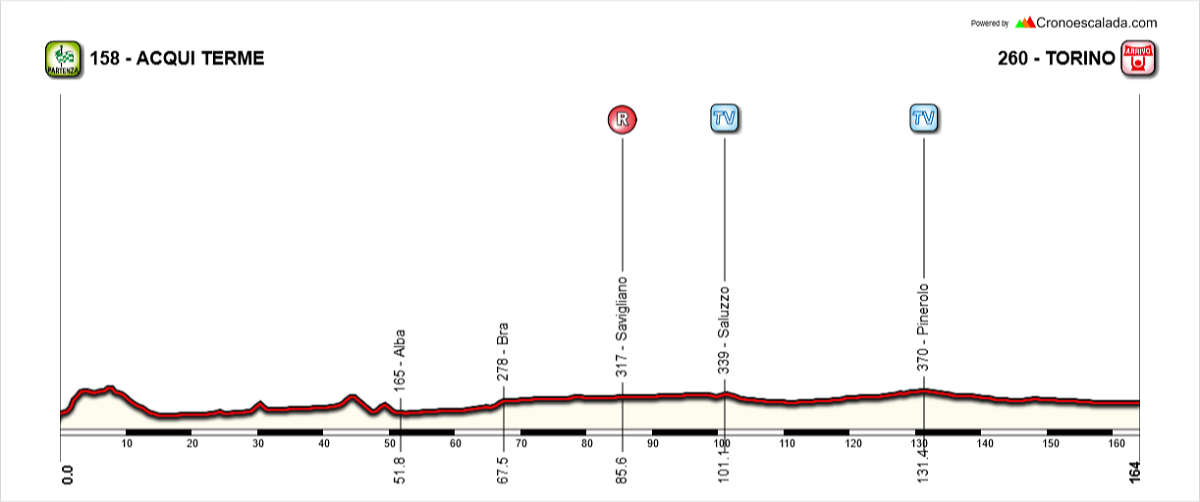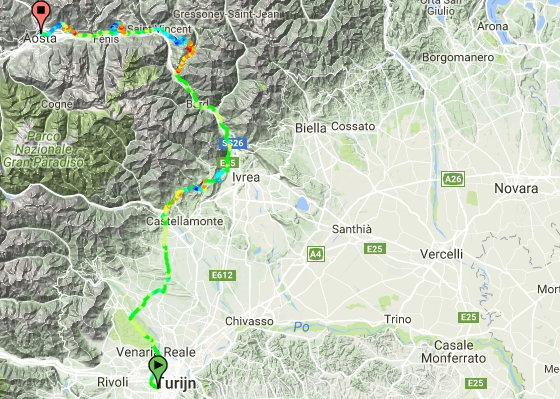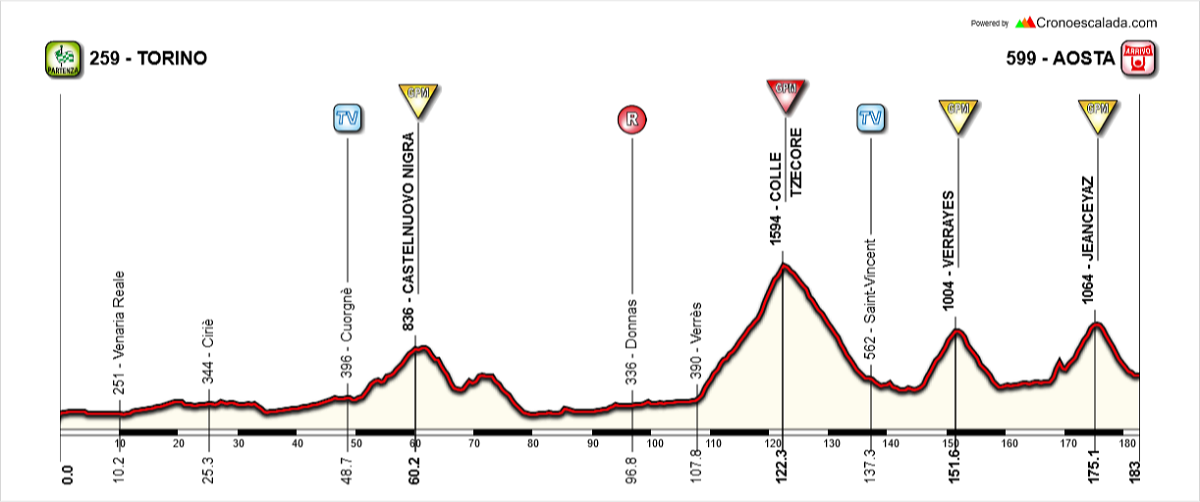- Feb 20, 2010
- 33,093
- 15,331
- 28,180
Nordic Series 6: Candanchú
To date I've dealt entirely with venues suitable to the Tour and Giro (one being in Switzerland but not so far away the Giro couldn't use it, although obviously the Tour de Suisse is a much more likely candidate), and with several further venues in the Alps to come, but the third Grand Tour is a bit left out in this project. This is for two reasons, really; one is that a skiing industry didn't really kick off in Spain until the 1970s and so major ski stations have less of a tradition in the Vuelta, and secondly - and most importantly - Nordic skiing doesn't have the same traction in Spain that it does in France or Italy. Indeed, Spain's history in XC skiing is mostly restricted to the controversial and now disgraced Johann Mühlegg. Born in Germany, Johann "Juanito" Mühlegg was, to put it bluntly, completely crazy. He accused members of the German team staff of trying to damage him "spiritually" until thrown off the squad. Carrying around a flagon of holy water and refusing to speak to members of the team except through his trusted Portuguese assistant Justina Agostino, he converted to Spanish nationality in 1999 and the change did him good, rising to the top of the sport despite a scrappy, wasteful skiing style countered by seemingly boundless energy. He won the World Cup overall in 2001, and promptly dominated the Olympics in Salt Lake City before it was found that the secret ingredient in his success was darbopoietin, a second-generation version of EPO that was so new they hadn't got around to banning it yet. Since then, the sport has been relegated back to outsider status in Spain.
There are, however, a number of Nordic stations along the Pyrenees, such as Cap del Rec, Sant Joan de l'Erm, Abodi and CIVO and several other well known venues have plenty of Loipe, such as Piedra San Martín and Pla de Beret. Only one Nordic station in Spain is suitable for this series, however, and that is the Estación de Esquí Candanchú, a little way beneath the Puerto de Somport in northwest Aragón.

The Spanish side of the Puerto de Somport forms a stylized crucifix, with the road up to the pass leading from the south, ultimately from Jacá via Canfranc-Estación, with two ski resorts branching off close to one another, Candanchú to the left and Astún to the right. Named after a Castilian/Aragonese bastardisation of the original French "Camp d'Anjou", there are 35km of trails along with some Alpine pistes. Candanchú is unique in being the only Spanish venue authorized for international biathlon competition, although it has only hosted trade games such as the Military championships before, no IBU-sanctioned events.

They do, however, host the national championships (aka the "how much can Victoria Padial Hernández win by this year? championships") annually on their wide open, sunny trails.
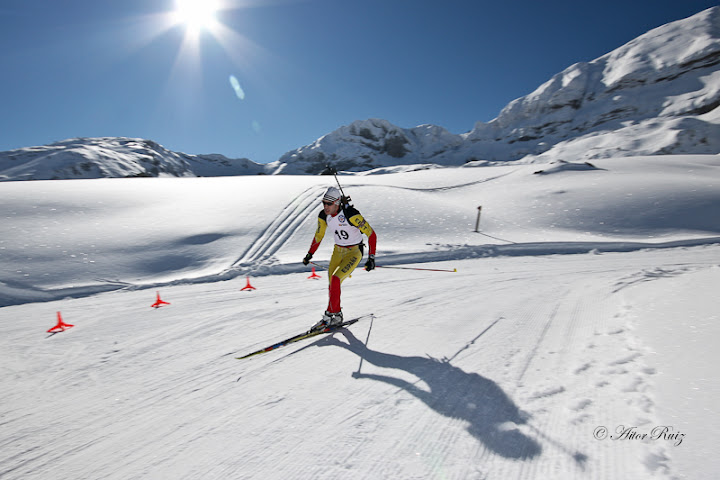
However, the reason for picking up on Candanchú is because unlike anywhere else in Spain, a real international competition in XC skiing has rocked up into town, when Jacá - the city which brands itself Spain's wintersport capital and has tried to host the Winter Olympics on several occasions unsuccessfully - hosted the Winter Universiade, in 1981 and 1995. Biathlon was not part of the program on those occasions, however XC skiing was, and the courses in the venue had the chance to show that Spain has the facilities for an international cross country venue, albeit limited compared to some of the sites I've used thus far. And indeed, realistically the site doesn't merit looking at ahead of some others on the basis of what opportunities it gives or its wintersport heritage, however it is the only site the Vuelta could use that I will handle, so I've looked at it quite early on.
Perhaps because of its fairly benign nature, the Puerto de Somport is surprisingly underused in the biggest races. The French side is the more challenging, with the last 9km averaging nearly 7%, but it's still hardly a monster. Compared to the Spanish side, though, it's very selective, as the plateau with Jacá and Sabiñánigo sits on a ridge intermediate in altitude between the plains of Aragón and the Pyrenees, leaving a fairly unthreatening-looking ascent which doesn't become potentially decisive until quite late on.
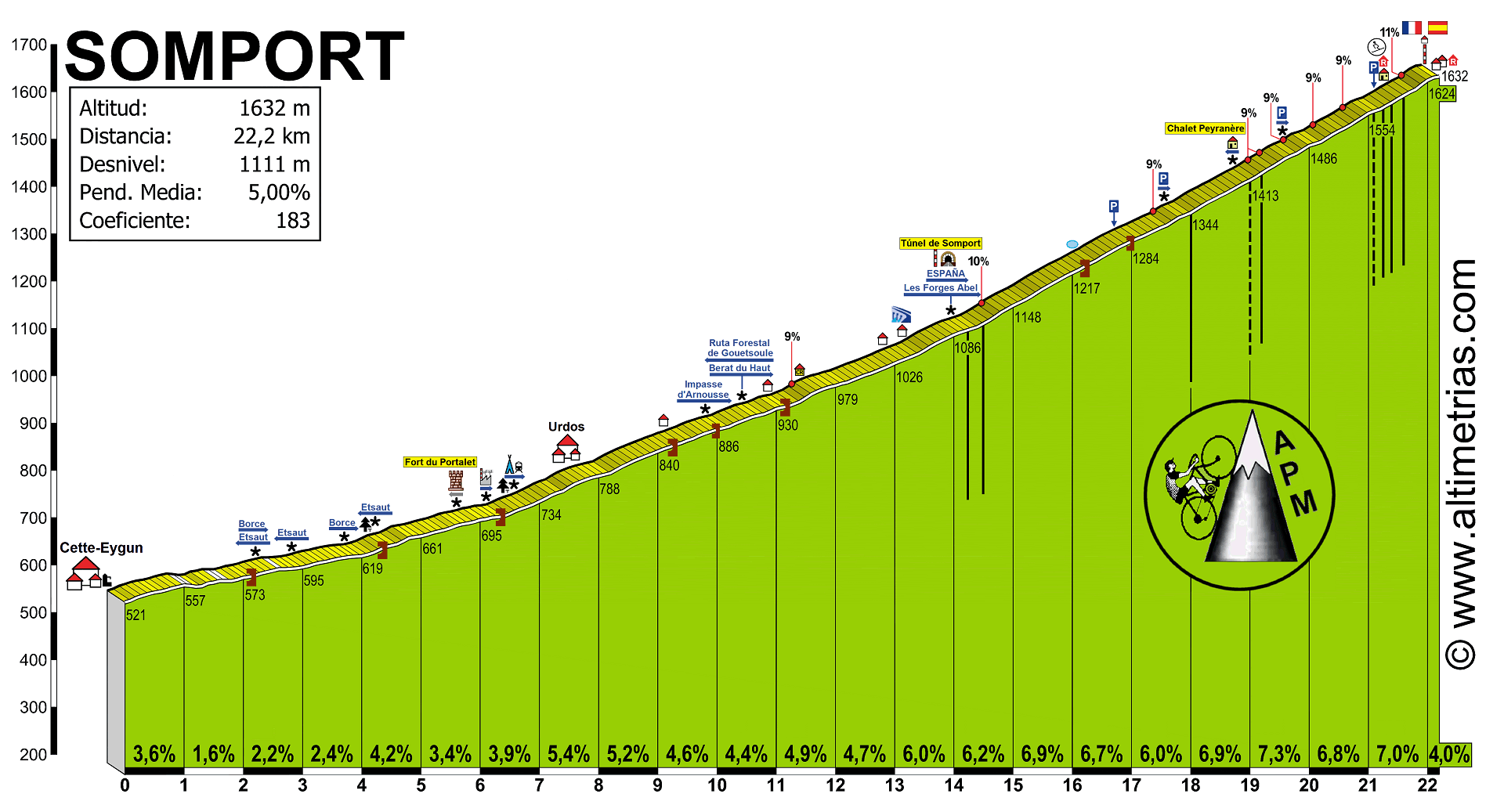
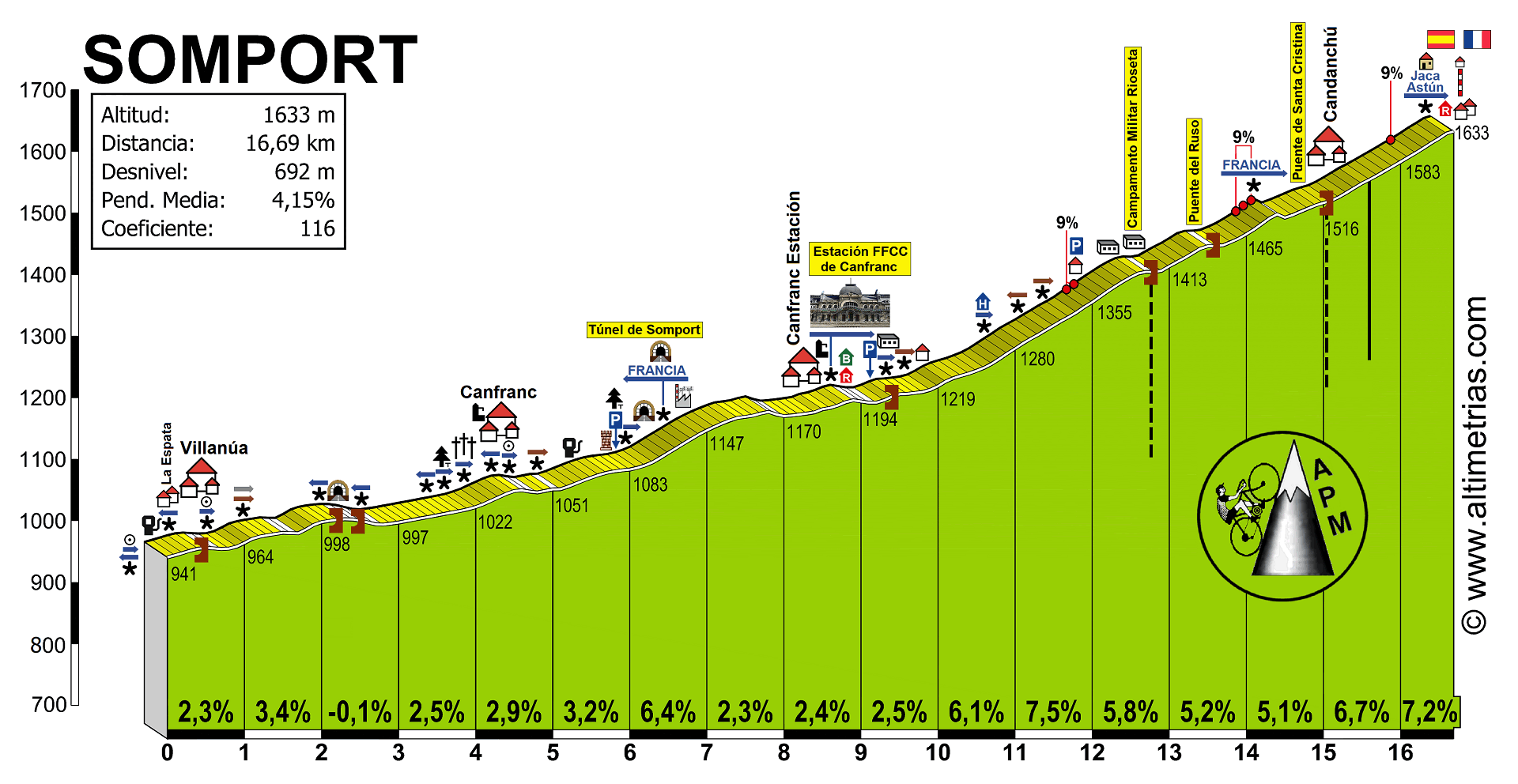
As you can see on the Spanish side, there's a junction for Candanchú at the 26km mark, whereupon we can turn off to the left and undertake a final ramp up to the line of 1,5km at 5,0% - divided into 700m at 7% reaching a max of 14%, then a flattening out as they cross the river, then the final 600m at 6%. Nothing like enough to break a field apart but an interesting little finale if riders come to it together - which they may well seeing as the previous climbs are hardly monstrous. Somport has surprisingly only been seen twice in Grand Tours, once in the Vuelta (in 1957, with the Portuguese José Ribeiro first over the summit early in a 250km stage from Huesca to Bayonne), and once in the Tour (in 1991, in the first Pyrenean stage from Pau to Jacá, with Leblanc first over the climb and Mottet winning the stage, which you can see here). The nearest we've come to a stage finish at Candanchú, however, was in the 1998 Vuelta, when a transitional stage from Benasque finished at Canfranc-Estación, partway up the Puerto, which was the site of Gianni Bugno's last pro win, from the breakaway as the péloton, tired from being put to the sword by José María Jiménez on back to back mountain stages, allowed the escapees to prevail. This may not always be the case though - the station has become somewhat united with the neighbouring Astún station (predominantly Alpine) and was purchased by Ibernieve Aragón in 2016 with the intention of bringing it into the Aramon group of ski stations - this would then give it common ownership with Cerler, Formigal and Valdelinares, which are established names in the Vuelta's lore.
Stage Proposal #1: Sangüesa - Estación de Esquí Candanchú, 142km

The biggest problem facing Candanchú from a racing point of view is that it is not ideally placed for decisive timegap racing. This is probably about the hardest stage one could present from the Spanish side of the climb, and it's hardly the most monstrous of stages, with all of the preceding climbs cat.3. However, of course the Vuelta has on two occasions in the past 5 years managed to produce its most epic racing on the least anticipated mountain stages, stages which were to shallow gradient MTFs thought of as rather pointless and not adding anything to the race. How wrong we were.
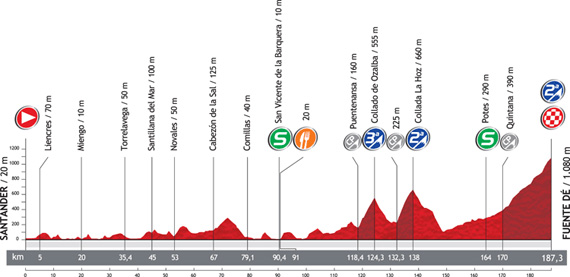
Yes, although my stage has several additional early climbs, these can all be added to or subtracted from to the designers' choice - I have gone for the "all-in" option here, but apart from the last two climbs before the MTF, each climb can be included in isolation or excluded entirely. Fuente Dé was a longer stage than mine here, however Formigal in 2016 was shorter. The question then comes on how to pace it to give these stages a chance to work. Here, this could only come after a key GC stage (either a TT or an MTF, which would have to be either in Navarre or La Rioja to work, so probably Moncalvillo or San Miguel de Áralar most likely) or a rest day. It is difficult, however, to predict or design to create the kind of racing that we got from those two stages, as they are somewhat anomalous in the recent history of the sport.
Stage proposal #2: Bayonne - Estación de Esquí de Candanchú, 211km

Far more fruitful is to come from the French side of the Somport, which would then leave us with a short descent + mini-climb finish that's like a super-easier version of the Peyragudes finish via Peyresourde, the Vernoux-en-Vivarais finish from the 2011 Paris-Nice, the Lac de Payolle finish in the 2016 Tour de France or maybe Xorret del Catí. Arriving before Somport from the north would give us a Unipuerto stage, which would be regrettable, while coming from the east would entail the easy side of Marie-Blanque. The west gives us stronger choices, of which I feel this is the best, although in reality I think it much more likely that organizers would choose to go over the better-known Soudet and only do one of the climbs preceding the finale rather than do both the western and northern faces of Soudet but only as far as lesser summits.

Back in the El Correo-El Pueblo Vasco days, Bayonne was a regular Vuelta stop-off owing to its secondary role as the de facto capital of Iparralde, the northern Basque provinces, but realistically a stage like this, where all but the last 5km are in France, is fairly unlikely - though we did have the Aubisque stage which left Spain after just 1km, or the Fuentes de Oñoro stage of the Vuelta a Castilla y León a couple of years ago which returned to Spain from Portugal only 800m from the line. Perhaps more realistically the riders could start in Dantxarinea like in the 2016 race, or maybe even from Pamplona and arrive at Saint Jean Pied-de-Port via the easy side of the Puerto de Ibañeta.
The two key climbs in the stage are made up of constituent parts of other climbs. The climb to what I've marked as the Col d'Issarbe but potentially also known as the Col de Hourchère or the Station d'Issarbe consists of this profile as far as the Col de Suscousse, followed by climbing the 4,5km downhill section of this side to Issarbe before descending the left hand side of that profile into the intermediate sprint. There's then the steepest climb of the day, 9km @ 9% from La Mouline to the Col de Labays on this route, before a two-stepped descent and a long and gradually turning-up-the-wick climb cresting just 5km out. The inspiration behind this stage in design is routes like the 2011 Galibier stage when Schleck went crazy from distance, or the 1999 Piau-Engaly stage won in great style (well, in great guts and guile - nothing the man did on the bike could be considered stylish) by Fernando Escartín. There would also be great similarities to an earlier mountain stage in the 2012 Vuelta, the Cuitu Negru stage, only my comparison would be more suited to a finish at the Puerto de Pajáres, a much more traditional venue than Cuitu Negru, which follows in a line of Asturian MTFs that have been included then promptly forgotten about (Coto Bello, Ermita de Alba).
To date I've dealt entirely with venues suitable to the Tour and Giro (one being in Switzerland but not so far away the Giro couldn't use it, although obviously the Tour de Suisse is a much more likely candidate), and with several further venues in the Alps to come, but the third Grand Tour is a bit left out in this project. This is for two reasons, really; one is that a skiing industry didn't really kick off in Spain until the 1970s and so major ski stations have less of a tradition in the Vuelta, and secondly - and most importantly - Nordic skiing doesn't have the same traction in Spain that it does in France or Italy. Indeed, Spain's history in XC skiing is mostly restricted to the controversial and now disgraced Johann Mühlegg. Born in Germany, Johann "Juanito" Mühlegg was, to put it bluntly, completely crazy. He accused members of the German team staff of trying to damage him "spiritually" until thrown off the squad. Carrying around a flagon of holy water and refusing to speak to members of the team except through his trusted Portuguese assistant Justina Agostino, he converted to Spanish nationality in 1999 and the change did him good, rising to the top of the sport despite a scrappy, wasteful skiing style countered by seemingly boundless energy. He won the World Cup overall in 2001, and promptly dominated the Olympics in Salt Lake City before it was found that the secret ingredient in his success was darbopoietin, a second-generation version of EPO that was so new they hadn't got around to banning it yet. Since then, the sport has been relegated back to outsider status in Spain.
There are, however, a number of Nordic stations along the Pyrenees, such as Cap del Rec, Sant Joan de l'Erm, Abodi and CIVO and several other well known venues have plenty of Loipe, such as Piedra San Martín and Pla de Beret. Only one Nordic station in Spain is suitable for this series, however, and that is the Estación de Esquí Candanchú, a little way beneath the Puerto de Somport in northwest Aragón.

The Spanish side of the Puerto de Somport forms a stylized crucifix, with the road up to the pass leading from the south, ultimately from Jacá via Canfranc-Estación, with two ski resorts branching off close to one another, Candanchú to the left and Astún to the right. Named after a Castilian/Aragonese bastardisation of the original French "Camp d'Anjou", there are 35km of trails along with some Alpine pistes. Candanchú is unique in being the only Spanish venue authorized for international biathlon competition, although it has only hosted trade games such as the Military championships before, no IBU-sanctioned events.

They do, however, host the national championships (aka the "how much can Victoria Padial Hernández win by this year? championships") annually on their wide open, sunny trails.

However, the reason for picking up on Candanchú is because unlike anywhere else in Spain, a real international competition in XC skiing has rocked up into town, when Jacá - the city which brands itself Spain's wintersport capital and has tried to host the Winter Olympics on several occasions unsuccessfully - hosted the Winter Universiade, in 1981 and 1995. Biathlon was not part of the program on those occasions, however XC skiing was, and the courses in the venue had the chance to show that Spain has the facilities for an international cross country venue, albeit limited compared to some of the sites I've used thus far. And indeed, realistically the site doesn't merit looking at ahead of some others on the basis of what opportunities it gives or its wintersport heritage, however it is the only site the Vuelta could use that I will handle, so I've looked at it quite early on.
Perhaps because of its fairly benign nature, the Puerto de Somport is surprisingly underused in the biggest races. The French side is the more challenging, with the last 9km averaging nearly 7%, but it's still hardly a monster. Compared to the Spanish side, though, it's very selective, as the plateau with Jacá and Sabiñánigo sits on a ridge intermediate in altitude between the plains of Aragón and the Pyrenees, leaving a fairly unthreatening-looking ascent which doesn't become potentially decisive until quite late on.


As you can see on the Spanish side, there's a junction for Candanchú at the 26km mark, whereupon we can turn off to the left and undertake a final ramp up to the line of 1,5km at 5,0% - divided into 700m at 7% reaching a max of 14%, then a flattening out as they cross the river, then the final 600m at 6%. Nothing like enough to break a field apart but an interesting little finale if riders come to it together - which they may well seeing as the previous climbs are hardly monstrous. Somport has surprisingly only been seen twice in Grand Tours, once in the Vuelta (in 1957, with the Portuguese José Ribeiro first over the summit early in a 250km stage from Huesca to Bayonne), and once in the Tour (in 1991, in the first Pyrenean stage from Pau to Jacá, with Leblanc first over the climb and Mottet winning the stage, which you can see here). The nearest we've come to a stage finish at Candanchú, however, was in the 1998 Vuelta, when a transitional stage from Benasque finished at Canfranc-Estación, partway up the Puerto, which was the site of Gianni Bugno's last pro win, from the breakaway as the péloton, tired from being put to the sword by José María Jiménez on back to back mountain stages, allowed the escapees to prevail. This may not always be the case though - the station has become somewhat united with the neighbouring Astún station (predominantly Alpine) and was purchased by Ibernieve Aragón in 2016 with the intention of bringing it into the Aramon group of ski stations - this would then give it common ownership with Cerler, Formigal and Valdelinares, which are established names in the Vuelta's lore.
Stage Proposal #1: Sangüesa - Estación de Esquí Candanchú, 142km

The biggest problem facing Candanchú from a racing point of view is that it is not ideally placed for decisive timegap racing. This is probably about the hardest stage one could present from the Spanish side of the climb, and it's hardly the most monstrous of stages, with all of the preceding climbs cat.3. However, of course the Vuelta has on two occasions in the past 5 years managed to produce its most epic racing on the least anticipated mountain stages, stages which were to shallow gradient MTFs thought of as rather pointless and not adding anything to the race. How wrong we were.

Yes, although my stage has several additional early climbs, these can all be added to or subtracted from to the designers' choice - I have gone for the "all-in" option here, but apart from the last two climbs before the MTF, each climb can be included in isolation or excluded entirely. Fuente Dé was a longer stage than mine here, however Formigal in 2016 was shorter. The question then comes on how to pace it to give these stages a chance to work. Here, this could only come after a key GC stage (either a TT or an MTF, which would have to be either in Navarre or La Rioja to work, so probably Moncalvillo or San Miguel de Áralar most likely) or a rest day. It is difficult, however, to predict or design to create the kind of racing that we got from those two stages, as they are somewhat anomalous in the recent history of the sport.
Stage proposal #2: Bayonne - Estación de Esquí de Candanchú, 211km

Far more fruitful is to come from the French side of the Somport, which would then leave us with a short descent + mini-climb finish that's like a super-easier version of the Peyragudes finish via Peyresourde, the Vernoux-en-Vivarais finish from the 2011 Paris-Nice, the Lac de Payolle finish in the 2016 Tour de France or maybe Xorret del Catí. Arriving before Somport from the north would give us a Unipuerto stage, which would be regrettable, while coming from the east would entail the easy side of Marie-Blanque. The west gives us stronger choices, of which I feel this is the best, although in reality I think it much more likely that organizers would choose to go over the better-known Soudet and only do one of the climbs preceding the finale rather than do both the western and northern faces of Soudet but only as far as lesser summits.

Back in the El Correo-El Pueblo Vasco days, Bayonne was a regular Vuelta stop-off owing to its secondary role as the de facto capital of Iparralde, the northern Basque provinces, but realistically a stage like this, where all but the last 5km are in France, is fairly unlikely - though we did have the Aubisque stage which left Spain after just 1km, or the Fuentes de Oñoro stage of the Vuelta a Castilla y León a couple of years ago which returned to Spain from Portugal only 800m from the line. Perhaps more realistically the riders could start in Dantxarinea like in the 2016 race, or maybe even from Pamplona and arrive at Saint Jean Pied-de-Port via the easy side of the Puerto de Ibañeta.
The two key climbs in the stage are made up of constituent parts of other climbs. The climb to what I've marked as the Col d'Issarbe but potentially also known as the Col de Hourchère or the Station d'Issarbe consists of this profile as far as the Col de Suscousse, followed by climbing the 4,5km downhill section of this side to Issarbe before descending the left hand side of that profile into the intermediate sprint. There's then the steepest climb of the day, 9km @ 9% from La Mouline to the Col de Labays on this route, before a two-stepped descent and a long and gradually turning-up-the-wick climb cresting just 5km out. The inspiration behind this stage in design is routes like the 2011 Galibier stage when Schleck went crazy from distance, or the 1999 Piau-Engaly stage won in great style (well, in great guts and guile - nothing the man did on the bike could be considered stylish) by Fernando Escartín. There would also be great similarities to an earlier mountain stage in the 2012 Vuelta, the Cuitu Negru stage, only my comparison would be more suited to a finish at the Puerto de Pajáres, a much more traditional venue than Cuitu Negru, which follows in a line of Asturian MTFs that have been included then promptly forgotten about (Coto Bello, Ermita de Alba).




